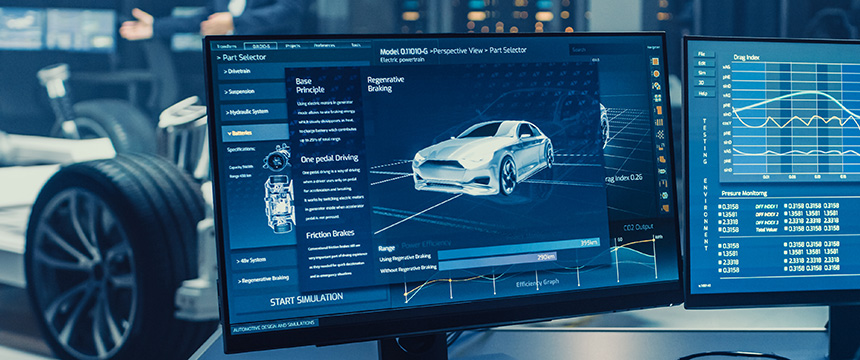USA v. Wang: Criminal & Civil Liability for Autonomous Vehicle IP & Trade Secrets Theft

A pending case involving a former engineer, his alleged theft of trade secret autonomous vehicle technology, and a midnight one-way escape flight to China is shedding light on efforts by the tech giant Apple to both develop and protect its valuable autonomous vehicle IP.
Apple’s so-called “Titan” autonomous vehicle project has garnered widespread interest and attention, despite most public discussion about its efforts being limited to rumors and speculation. However, despite Apple’s notoriously secretive culture, a new case in the Northern District of California is shedding light on the difficulties of keeping trade secrets secret. While the case is still unfolding, the government’s choice to use it as one of the five flagship cases for the newly-formed Disruptive Technology strikeforce indicates that autonomous vehicle technology is going to be critical not only in the commercial space but also to U.S. national security interests. The lessons from this breach of Apple’s most sensitive IP are informative for other firms seeking to or currently developing their own technology.
The Case
A former Apple employee, Mr. Weibao Wang, was indicted following a 2018 incident related to Apple’s autonomous vehicle development efforts. Wang joined the company in March 2016 as an engineer working on Apple’s secret self-driving car project. During this time, the company had as many as 5000 employees “disclosed” into the project. About 2700 of those had access to sensitive data concerning the autonomous vehicle system’s development. Wang left the company in April 2018, four months after secretly accepting an offer to work at a competing company based in China. In May 2018, Apple reviewed access logs for its sensitive project databases and found large volumes of trade secret and intellectual property data had been accessed by Wang just before he left. In June 2018, law enforcement searched Wang’s residence in California and seized computer equipment that was found to contain large quantities of confidential and proprietary data from the autonomous vehicle project, including the entire source code for the project. Wang fled the country using a one-way ticket to China just before midnight the same day Federal agents completed a search of his residence.
This case highlights many key elements related to the protection and enforcement of trade secret rights and federal law’s reaction to their misappropriation.
Key Federal Laws
In this case, the Federal prosecutors allege that Mr. Wang violated numerous provisions of the Defense of Trade Secrets Act (DTSA), which provides both criminal and civil actions for the theft or misappropriation of trade secrets.
Under the DTSA, trade secrets are:
“…all forms and types of financial, business, scientific, technical, economic, or engineering information, including patterns, plans, compilations, program devices, formulas, designs, prototypes, methods, techniques, processes, procedures, programs, or codes, whether tangible or intangible, and whether or how stored, compiled, or memorialized physically, electronically, graphically, photographically, or in writing if:
- the owner thereof has taken reasonable measures to keep such information secret; and
- the information derives independent economic value, actual or potential, from not being generally known to, and not being readily ascertainable through proper means by, another person who can obtain economic value from the disclosure or use of the information.”
Criminal theft of trade secrets is covered by 18 U.S.C. § 1832 of the DTSA. To show a violation, the government must prove: (1) the defendant stole, or without authorization of the owner, obtained, destroyed, or conveyed information; (2) the defendant knew this information was proprietary; (3) the information was, in fact, a trade secret; (4) the defendant intended to convert the trade secret to the economic benefit of anyone other than the owner; (5) the defendant knew or intended that the owner of the trade secret would be injured; and (6) the trade secret was related to or was included in a product that was produced or placed in interstate or foreign commerce. Penalties against individuals include up to $250,000 and 10 years in jail for each offense.
Civil offenses are covered by 18 U.S.C. § 1836 of the DTSA. The law provides three forms of interim relief: temporary restraining orders (TROs), preliminary injunctions, and ex parte seizures, all three of which are designed to prevent flight of IP, particularly out of the country in the case of ex parte seizure. It also provides for legal remedies, including damages for actual loss caused by the misappropriation of the trade secret, damages for any unjust enrichment caused by the misappropriation of the trade secret that is not addressed in computing damages for actual loss, and attorney fees.
What can we learn from Apple’s Case?
As described in the April 2023 indictment, Apple put in place several measures to keep their information secret: (1) requiring employees to sign a Confidentiality and Intellectual Property Agreement (IPA), (2) limiting knowledge of confidential projects to select employees (“disclosure status”), (3) requiring “disclosure status” employees to attend Secrecy training, (4) require all employees take annual Business Conduct training that included appropriate handling of confidential information, (5) segregating out confidential and proprietary data and information into separate databases with restricted access, along with several other general procedures including (6) exit interviews for employees, and (7) periodic reviews of access activity logs for sensitive databases. In particular, Apple’s IPA prohibited the transfer or transmission of IP without Apple’s consent and prohibited employees from using Apple’s IP except as authorized by Apple. The company’s Secrecy training covered restrictions to providing information or confirmation of information to non-disclosed individuals, and rules prohibiting employees from storing Apple’s intellectual property on devices over which they do not have personal control, as well as the requirements for storing and transmitting project documents using secure mechanisms.
While Apple’s rogue former employee managed to flee, the fact that he did so only hours before likely capture demonstrates the value of the protective measures Apple had in place—particularly with respect to its periodic reviews of access activity logs. All companies would be well advised to review their processes and policies and implement similar measures protecting their trade secret information.
Special thanks to Ashley Pennington, a summer associate in Foley’s Washington, D.C. office, for her contributions to this article.
